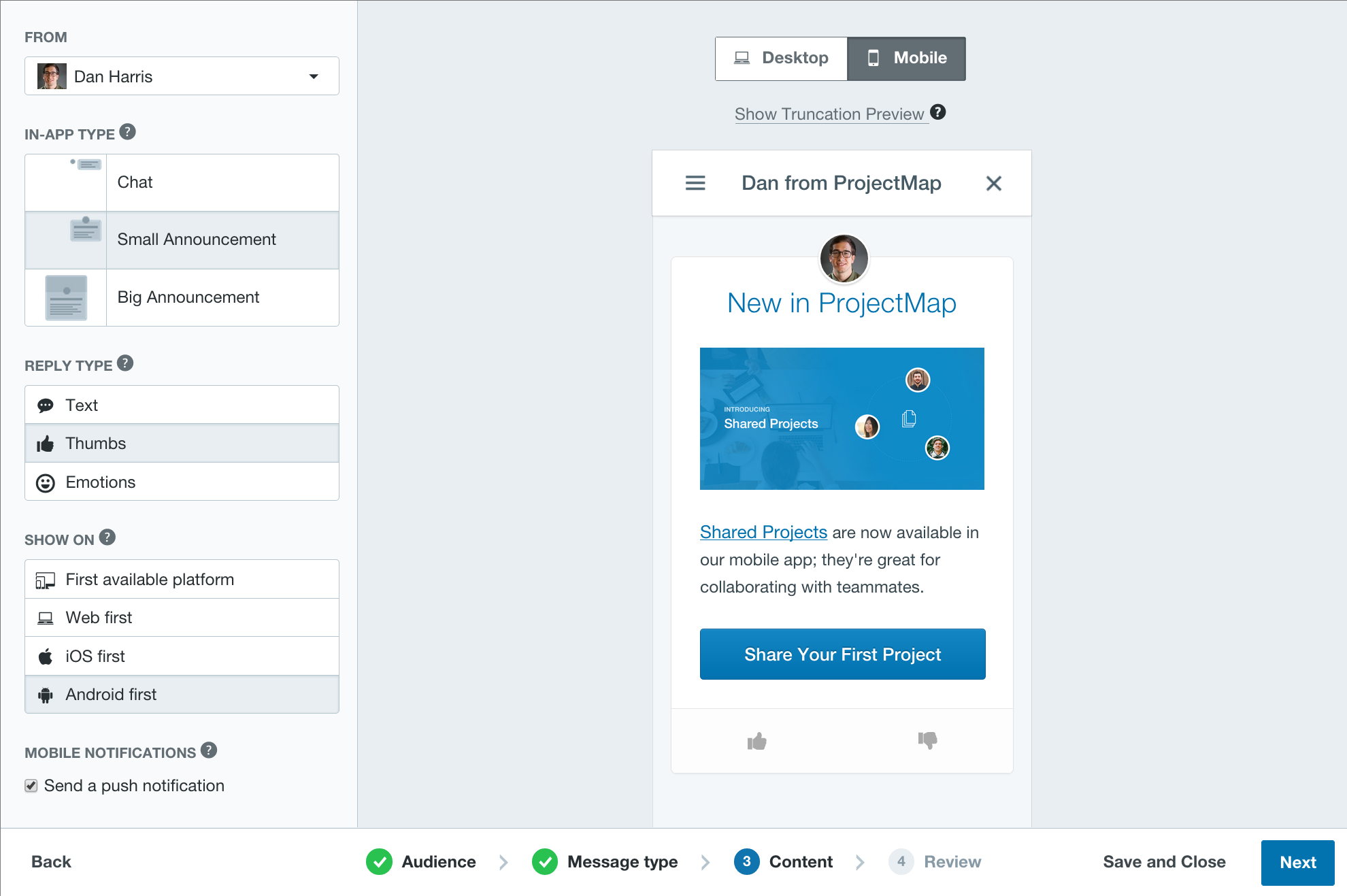Want smarter insights in your inbox? Sign up for our weekly newsletters to get only what matters to enterprise AI, data, and security leaders. Subscribe Now
When marketers personalize communications to prospects and customers, they employ all sorts of data and content to help make that message appear as if it is for you and you alone. However, one element of personalization still eludes many: device context.
Today, Intercom has added a feature to its communication platform, named Platform Chooser, that promises to solve the problem of device context for its customers.
Intercom’s Platform Chooser was born of internal necessity.
“It is a pretty obvious problem to us,” Brian Donohue, product manager at Intercom, told me via email. “We needed it ourselves when we were sending some channel-specific messages to our customers!”
Here’s the problem with sending in-app, personalized messages without device context.
Let’s say you offer both a web and mobile application. Customers primarily use the web app to get the full power of your product or service, tending to use the mobile app for quick analytics, summaries, or managing requests on-the-go.
“For many messages, you want to control not just who receives it, but also where they receive it,” Donohue said. “You might want to send a message to customers who’ve used your iOS app three times in the past week, and that’s something you’ve been able to do with Intercom — segmenting customers based on behavior. But you also might want to make sure they receive the message specifically on iOS. Many calls-to-action are platform specific, and you want to ensure your message works on the platform where they view it.”
 375 mobile developers with over 900 million MAU
375 mobile developers with over 900 million MAU
told us what’s working in mobile marketing automation
Intercom’s new feature allows web and mobile app marketers — and customer support managers — to show messages in the most appropriate context to drive the desired customer action.
Context isn’t just limited to which device the customer is using at that time. “For some customer communications you just want to get it to them as soon as possible, such as updating billing information, so being able to have a message seen wherever a user logs in first is valuable,” Donohue said.
While many mobile app developers can personalize communications and send in-app messages to users, Intercom provides a communication platform that works across mobile and web apps. Intercom’s Platform Chooser is about where the user sees the message first. The customer receives a notification only on the platform you choose, but, once read on that platform, the message is available to deliver across all platforms.
“We decided to make messages appear on a specific platform first, rather than only on that specific platform, because we didn’t want to create silos,” Donohue said. “Customers expect a unified experience with a company across all platforms. We tried to enable platform targeting without sacrificing the simplicity of having everything synced everywhere.”
This means that users may see an “update billing” message first on the Intercom-powered web app, but afterwards they can still reference that message in their conversation list via iOS, Android, or whatever platform they’re on.
An Intercom app that allows for remote management and distribution of messages to users is available on both Android and iOS. Intercom also provides an SDK for iOS so that developers can bake its features into their apps, and an Android SDK is in beta.
Platform Chooser is available now to all existing Intercom customers.



